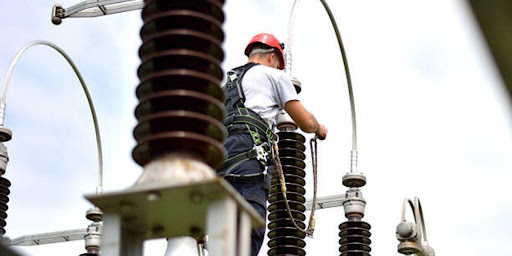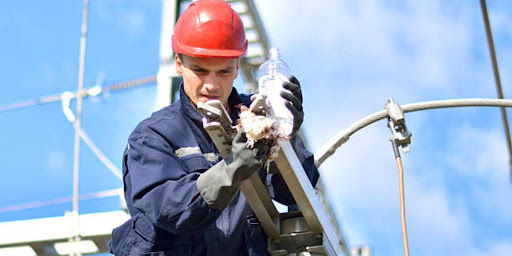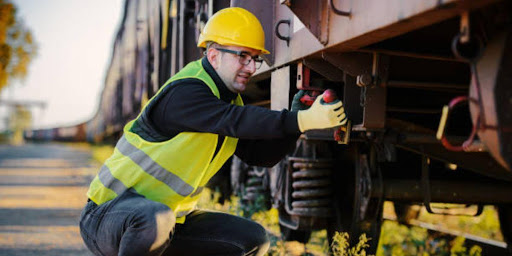Power Articles
Industry Elevating Content
Safety First: Ensuring Windows and Doors Installation Team’s Well-being

PowerArticles
Oct. 23rd, 2023
In the dynamic world of the windows and doors installation industry, prioritizing safety is paramount. It is good to safeguard the well-being of installation teams within these specialized companies. As professionals in the business of enhancing homes and businesses, ensuring the security and health of the workforce is non-negotiable, from adhering to rigorous safety protocols to providing training on the latest industry standards. Join us on a journey to explore the various ways of how these companies champion “Safety First,” making it their cornerstone for success and growth.
Understanding the Risks
Safety is paramount in the windows and doors installation process, as neglecting it can lead to various hazards and consequences for both the workers and the company. To understand these risks, it’s essential to identify common hazards specific to the windows and doors industry.
A. Identifying common hazards in the windows and doors installation process:
- Falling hazards: Workers often operate at heights when installing windows and doors. This exposes them to the risk of falls from ladders, scaffolding, or elevated platforms. Ensuring proper fall protection measures like guardrails and safety harnesses are in place is crucial.
- Sharp tools and materials: The installation process involves the use of sharp tools like saws, drills, and nails. Mishandling these tools or encountering unexpected obstacles can result in cuts, punctures, or other injuries.
- Weather-related risks: Outdoor installation work exposes workers to changing weather conditions, including rain, wind, and extreme temperatures. These conditions can create slippery surfaces, reduce visibility, and increase the risk of accidents.
B. The potential consequences of neglecting safety:
- Injuries to workers: Neglecting safety measures can lead to injuries ranging from minor cuts and bruises to severe falls or tool-related accidents. These injuries not only harm the well-being of the employees but can also lead to lost productivity and increased medical expenses.
- Damaged property: Poor safety practices can result in property damage during the installation process. This includes damage to the windows and doors being installed or harm to the customer’s property. Such incidents can lead to costly repairs and loss of customer trust.
- Reputation damage for the company: A lack of commitment to safety can tarnish the reputation of a windows and doors installation company. News of accidents or damaged property can spread quickly, leading to a loss of credibility and potential legal repercussions.
Creating a Safety Culture
Leadership Commitment to Safety:
- Management’s Role in Setting Safety Standards: The leadership team must take an active role in defining and implementing safety standards. This includes establishing clear guidelines for safe installation practices, providing the necessary resources for safety compliance, and continuously evaluating and improving safety protocols.
- Leading by Example: Management should set the tone for safety by adhering to safety protocols themselves. This not only includes following safety guidelines but also actively participating in safety activities, demonstrating their commitment to the well-being of the installation team.
Employee Training and Awareness:
- Safety Training Programs: The company should invest in comprehensive safety training programs tailored to the specific hazards and risks associated with window and door installation. Regular training ensures that employees are well-prepared to handle various safety scenarios.
- Regular Safety Meetings: Conducting frequent safety meetings is essential for keeping safety concerns at the forefront of employees’ minds. These meetings provide an opportunity to discuss recent incidents, share best practices, and address any emerging safety issues.
Encouraging Reporting and Feedback:
A. Anonymous Reporting Channels: To foster a culture of open reporting, the company should establish anonymous reporting channels. This enables employees to report safety concerns without fear of retaliation, encouraging early identification and resolution of potential hazards.
B. Open Communication About Safety Concerns: Management should actively encourage open communication about safety concerns. This involves creating an environment where employees feel comfortable discussing safety issues, providing feedback, and suggesting improvements.

Providing Proper Equipment and Tools
Ensuring workers have the right personal protective equipment (PPE):
- Safety helmets: Workers should wear sturdy helmets to protect their heads from falling debris or accidents during installation.
- Gloves: High-quality gloves safeguard hands from sharp materials, splinters, and extreme temperatures.
- Safety glasses: These are essential to protect eyes from dust, debris, and potential hazards when handling glass and other materials.
Maintaining and inspecting tools and equipment:
- Regular maintenance schedules: Implementing routine maintenance checks for tools and equipment, such as drills and saws, ensures they remain in optimal working condition, reducing the risk of accidents.
- Replacing damaged equipment: Promptly replacing tools or equipment that are damaged or malfunctioning is vital to prevent accidents and maintain work quality.
Specialized equipment for high-risk tasks:
- Scaffolding: Properly constructed and inspected scaffolding systems provide safe access to elevated areas, reducing the risk of falls.
- Fall protection systems: Installing fall protection measures like safety harnesses and guardrails when working at heights is essential to prevent accidents.
Safe Work Practices
Establishing Standard Operating Procedures (SOPs):
- Step-by-step Installation Guidelines: Windows and doors companies should develop detailed SOPs that outline the precise steps for installation. This includes assessing the site, measuring, preparing the openings, and securing the windows and doors. These SOPs ensure consistency and minimize the risk of errors or accidents.
- Emergency Procedures: In the event of unexpected situations such as extreme weather or accidents, emergency procedures must be in place. These protocols should cover evacuation plans, first aid, and communication methods to swiftly address any unforeseen circumstances.
Proper Lifting Techniques:
- Training on Ergonomic Lifting: Team members should receive training on ergonomic lifting techniques to reduce the risk of musculoskeletal injuries. This includes proper body mechanics, posture, and weight distribution while handling windows and doors.
- Use of Mechanical Aids: Implementing mechanical aids like dollies, hoists, or forklifts should be encouraged. These aids reduce the physical strain on workers, making lifting and transporting heavy materials much safer.
Safe Handling of Materials:
- Weight Restrictions: Clearly defined weight restrictions should be in place for each team member. This ensures that they do not attempt to lift or handle materials beyond their capacity, preventing injuries.
- Storage Guidelines: Proper storage of windows and doors on-site is crucial to prevent damage and maintain their structural integrity. Materials should be stored securely to avoid accidents and ensure that they are in optimal condition for installation.

Weather Considerations
A. Monitoring Weather Conditions:
- Checking Forecasts: Before starting any installation project, the team should monitor weather forecasts diligently. This includes keeping an eye on expected temperature changes, precipitation, and wind speed. Regular updates allow the team to plan accordingly and make informed decisions.
- Implementing Weather-Related Safety Protocols: Based on weather forecasts, the company should have clear protocols in place. This may involve rescheduling outdoor installations during severe weather, providing extra safety gear, or adapting work methods to suit changing conditions.
B. Heat and Cold Stress Prevention:
- Providing Shade and Hydration in Hot Weather: During scorching summer days, the installation team should have access to shade and ample drinking water. Heat stress can be dangerous, so regular breaks and hydration are essential to prevent heat-related illnesses.
- Proper Clothing and Heating Equipment in Cold Weather: In colder months, the team should be equipped with appropriate clothing and heating equipment. Insulated clothing, heated shelters, and warm beverages can help prevent cold stress and ensure the team’s comfort and safety.
Emergency Preparedness
This emergency preparedness can be achieved through a combination of first aid training and supplies, as well as well-thought-out evacuation plans.
First Aid Training and Supplies
- First Aid Kits on-site: A crucial aspect of emergency preparedness is having well-equipped first aid kits readily available at all job sites and within the company premises. These kits should include essential items like bandages, antiseptic wipes, scissors, and gloves. Regularly checking and restocking these kits ensures they are always ready for use in case of injuries.
- Trained First Responders Among the Team: Designating team members as trained first responders is essential. These individuals should undergo first aid and CPR training to provide immediate assistance during accidents or medical emergencies. Their skills can make a significant difference in stabilizing a situation until professional medical help arrives.
Evacuation Plans
- Identifying Exit Routes: In the event of a fire or other emergencies, clear exit routes must be identified at each job site and company location. Windows and doors should be easily accessible, and employees should be familiar with these exit points. Proper signage can also guide employees to safety.
- Regular Drills: Regular evacuation drills are vital for ensuring that all team members know what to do in an emergency. These drills should be conducted periodically to assess the effectiveness of the evacuation plan and to keep employees well-prepared.
Conclusion
In conclusion, prioritizing the safety and well-being of our windows and doors installation team is paramount for our company’s success. By implementing rigorous safety protocols, providing comprehensive training, and investing in quality protective equipment, we protect our employees and enhance our business’s efficiency and reputation. A workforce that feels secure and valued is more likely to deliver exceptional results and foster customer trust. As we continue to grow, our commitment to safety remains unwavering, ensuring that every member of our installation team returns home safely each day. Safety First is not just a motto; it’s our promise to our employees and customers alike.
Published By
PowerArticles
Oct. 23rd, 2023